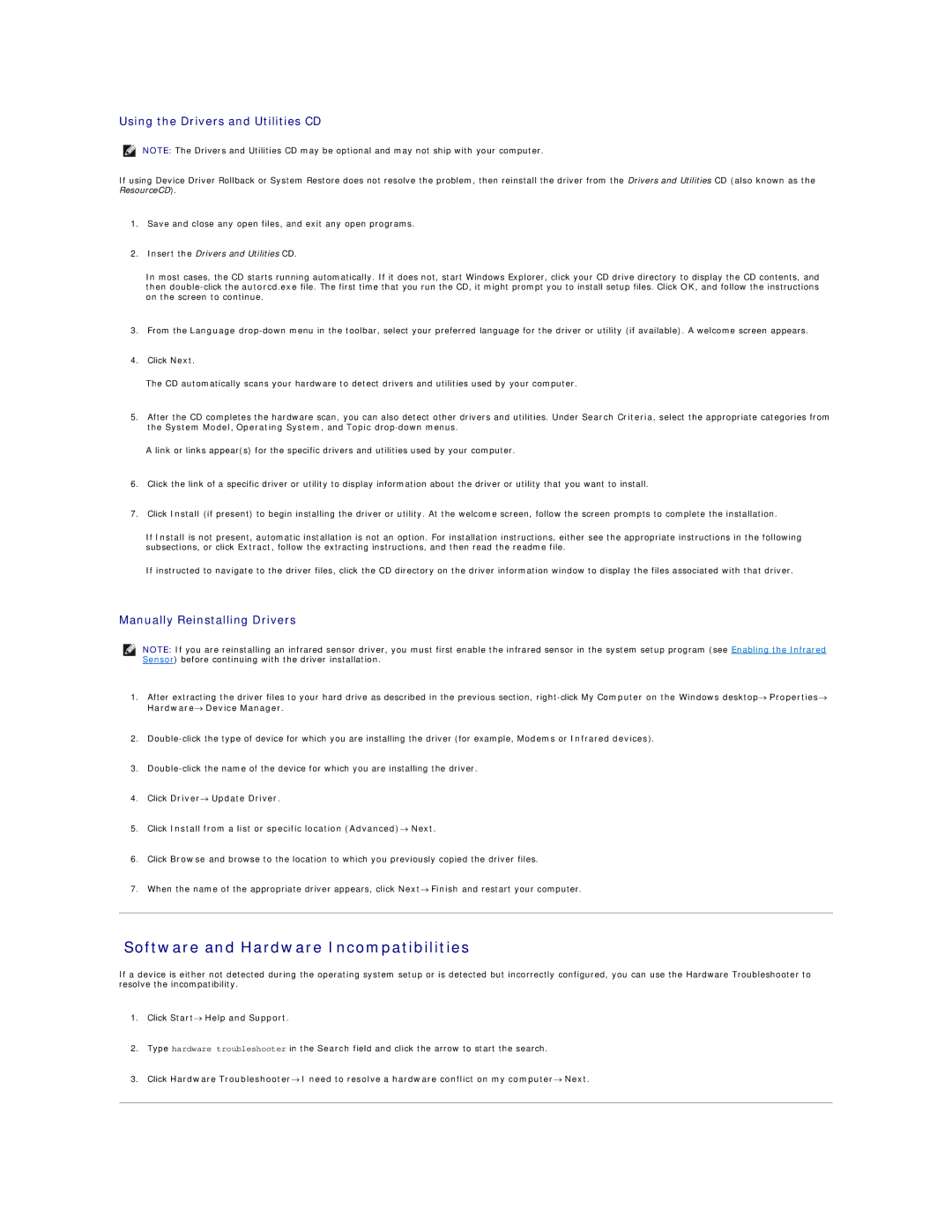
Using the Drivers and Utilities CD
NOTE: The Drivers and Utilities CD may be optional and may not ship with your computer.
If using Device Driver Rollback or System Restore does not resolve the problem, then reinstall the driver from the Drivers and Utilities CD (also known as the ResourceCD).
1.Save and close any open files, and exit any open programs.
2.Insert the Drivers and Utilities CD.
In most cases, the CD starts running automatically. If it does not, start Windows Explorer, click your CD drive directory to display the CD contents, and then
3.From the Language
4.Click Next.
The CD automatically scans your hardware to detect drivers and utilities used by your computer.
5.After the CD completes the hardware scan, you can also detect other drivers and utilities. Under Search Criteria, select the appropriate categories from the System Model, Operating System, and Topic
A link or links appear(s) for the specific drivers and utilities used by your computer.
6.Click the link of a specific driver or utility to display information about the driver or utility that you want to install.
7.Click Install (if present) to begin installing the driver or utility. At the welcome screen, follow the screen prompts to complete the installation.
If Install is not present, automatic installation is not an option. For installation instructions, either see the appropriate instructions in the following subsections, or click Extract, follow the extracting instructions, and then read the readme file.
If instructed to navigate to the driver files, click the CD directory on the driver information window to display the files associated with that driver.
Manually Reinstalling Drivers
NOTE: If you are reinstalling an infrared sensor driver, you must first enable the infrared sensor in the system setup program (see Enabling the Infrared Sensor) before continuing with the driver installation.
1.After extracting the driver files to your hard drive as described in the previous section,
2.
3.
4.Click Driver→ Update Driver.
5.Click Install from a list or specific location (Advanced)→ Next.
6.Click Browse and browse to the location to which you previously copied the driver files.
7.When the name of the appropriate driver appears, click Next→ Finish and restart your computer.
Software and Hardware Incompatibilities
If a device is either not detected during the operating system setup or is detected but incorrectly configured, you can use the Hardware Troubleshooter to resolve the incompatibility.
1.Click Start→ Help and Support.
2.Type hardware troubleshooter in the Search field and click the arrow to start the search.
3.Click Hardware Troubleshooter→ I need to resolve a hardware conflict on my computer→ Next.
